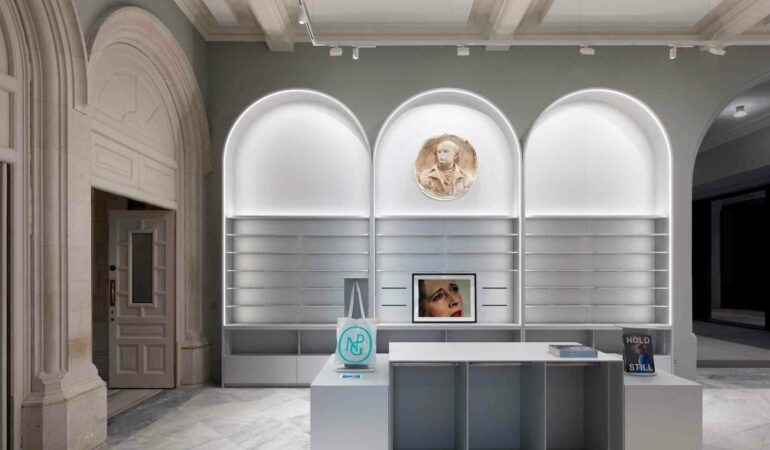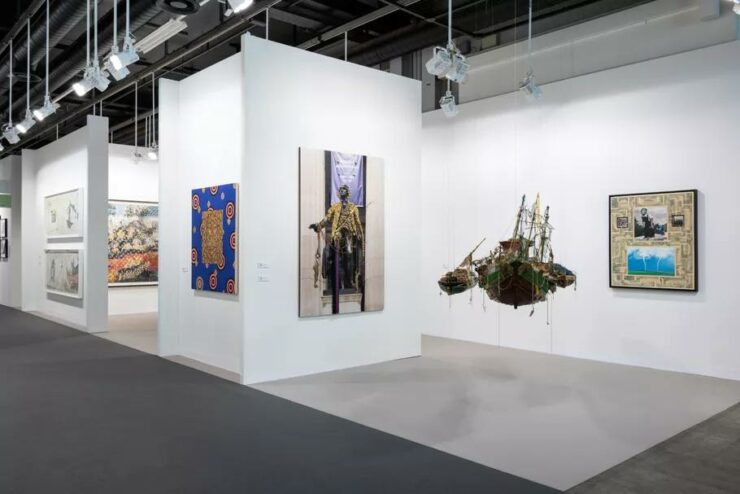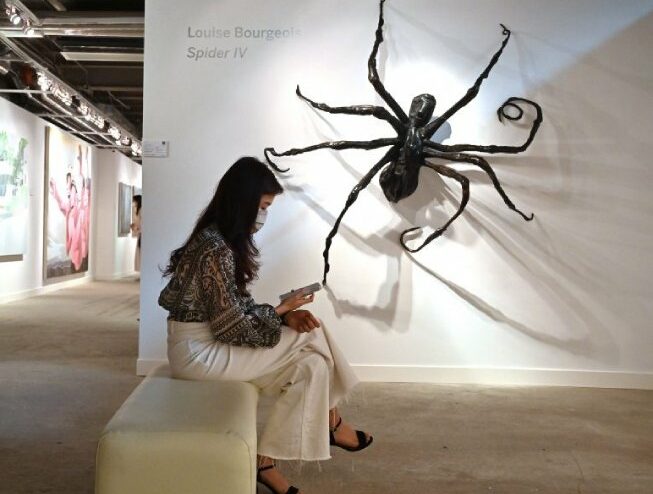London studio Alex Cochrane Draftsmen has made a triplet of exhibition hall shops at the as of late redone Public Picture Display in London.
The retail outlets, which were completed as part of a three-year renovation of the Victorian Grade I-listed building by Purcell and Jamie Fobert Architects, had to be respectful and, whenever possible, non-intrusive.
Alex Cochrane Architects and the lead studios collaborated closely to create a main shop next to the museum’s new entrance and two additional shops that service temporary exhibition spaces and “brought together the monumental and the intimate.”
“The test with this task was to configuration focused retail spaces that would give a moving shopping experience while conveying a plan that embraced the exquisite extents of the Grade I fabricating,” Alex Cochrane Engineers pioneer Alex Cochrane told Dezeen.
Cochrane designed the two adjoining rooms of the main shop to emphasize verticality and have impressive ceiling heights of six to 7.5 meters.
Cochrane stated, “The best way to celebrate these magnificent heights was for our retail architecture to reach tall and respectably stop short of the period cornicing.”
“There’s an undeniable vertical highlight to our plans that permits you to turn upward and value the tremendous levels and period enumerating.”
They made their display framework intentionally architectural in scale because they knew it would have to be taller than typical retail furniture.
He explained, “We wanted to celebrate the heights of these two rooms.” We wanted the guest to look both ahead and up. Naturally, we also desired street visibility.”
The practice’s design utilized arched forms, drawing inspiration from the space’s historical door and room openings as well as the larger gallery.
Cochrane stated, “We repeated the shape of these soaring arches around the room creating a rhythm so that all the arches, old and new, became of a singular and familiar language.”
He used thin “halos” of light to outline the arches and highlight the large plaster-cast busts that hang within the display arches, increasing the shop’s street visibility without requiring additional structural intervention.
During the renovation, plaster casts of Holbein, Chantry, and Roubillac were found in the gallery’s attic. These casts are prototypes for the stone versions on the building’s rear elevations.
“We love the way they are outlined in the curves,” said Cochrane. ” They have a texture and roughness that are comparable to our metallic finishes.
In a similar vein, the impressiveness of the space is amplified by the fact that an original lantern light in the roof, which had been boarded up for many years, now takes center stage.
The project’s minimalist material palette was influenced by a number of factors.
According to Cochrane, “the materials had to be complimentary to those of the period finishes, but still remain easily distinguishable.”
Additionally, we chose our materials based on their low environmental impact credentials. Materials with high embodied carbon and VOCs were avoided, but local, reusable, recycled, second-hand, and certified materials were prioritized.”
The stone came from Europe, and brushed metal, “which is neutral in both tone and color,” was chosen as the signature material.
Cochrane chose Arper for the metallic furniture because of their innovative and “low-impact” manufacturing processes, which are mindful of the carbon footprint of steel and other metals.
He stated, “Matte finishes were preferred over polished finishes because they reflect less light, ensuring that the products remain the focus.”
Richlite was used to construct much of the furniture for the exhibition shop on the first floor. It is an FSC-certified material made from recycled post-consumer paper that is long-lasting and sustainable.
Linoleum was used to construct the mid-floor furniture for the ground floor exhibition shop. Linoleum is made of 97% natural materials, is 30% recycled, and is 100% recyclable and compostable.
After trying out a few different paint colors, the practice decided to use “School House White” on the ceilings and “Lamp Room Gray” on the walls.
“These colors contrast subtly with our own metallic finishes and follow well on from those in the adjacent entrance hall and the east staircase.”
“We needed to be key about areas of strength for utilizing, as we were cognizant that the product would likewise have a lot of variety.”
“That could really catch the eye of the passer-by with an invigorating color” was the practice’s choice for the stand-alone jewelry cabinet between the two monumental teak-framed windows.
In a similar vein, Cochrane wanted the payment counter to stand out, so he used a highly patterned green marble to lure customers to this end of the space, where they can enjoy views of Charing Cross Road and the newly landscaped forecourt beyond.
“As a way of doing things, we are minimalists who adore bright colors. Cochrane stated, “We believe color can really revitalize a room.”
This week marks the first time the National Portrait Gallery has reopened following renovation and broader rebranding. Based on a sketch by the gallery’s first director, illustrator Peter Horridge redesigned the museum’s logo earlier this year.
Alex Cochrane Architects and Andrew Meredith are the photographers.
Disclaimer: The views, suggestions, and opinions expressed here are the sole responsibility of the experts. No Marketwise Analytics journalist was involved in the writing and production of this article.


